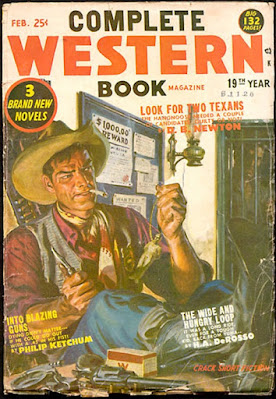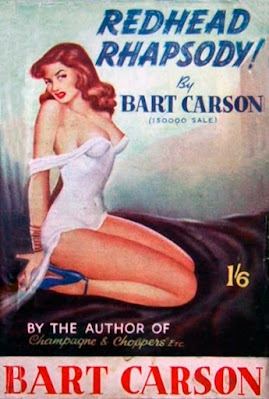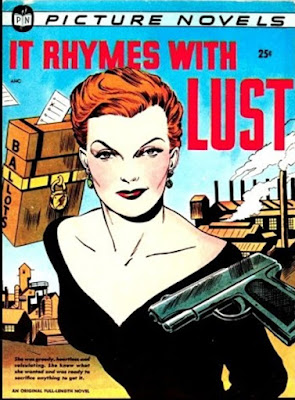I last saw this movie at the Eagle Drive-In in 1964 when my dad and I watched it along with some other movie. I’m afraid I don’t remember the second feature. It was probably a beach movie, an Elvis movie, or a John Wayne movie. I can’t consider TAGGART a Movie I’d Missed Until Now, but sixty years is a long time ago. Even so, there were scenes in it that I still remembered, so I suppose that means they were pretty effective. I recall that at the time I really enjoyed it.
This was also my introduction to the work of Louis L’Amour, although that name
didn’t mean anything to me then and it would be three or four years before I
read my first L’Amour novel (THE SACKETT BRAND). In 1964, L’Amour was already a
successful Western writer with good sales and a number of movies based on his
novels, but he wasn’t the bestselling icon he became a decade or so later.
TAGGART, like all of L’Amour’s work, makes use of a traditional Western plot,
or in this case, several of them. As the movie opens, an evil cattle baron and
his equally evil son stampede a herd of cattle through the camp of a smaller
rancher who’s encroaching on range the cattle baron considers his own. The small
rancher, his wife, and their cook all wind up dead, and the couple’s son, Kent
Taggart, is wounded. So is the evil cattle baron. Taggart catches up to them in
town and kills the cattle baron’s son. Before dying, the cattle baron sends for
three hired killers and sends them after Taggart.
From that point, TAGGART becomes a revenge Western—until it becomes a fight the
Apaches Western. Taggart winds up at an abandoned Spanish mission where an old
prospector has found a gold mine. The prospector has a beautiful daughter and a
beautiful second wife. Emotional turmoil ensues. Two of the hired killers show
up. (Taggart has already killed one of them during the pursuit.)
Double-crosses, Indian attacks, and more Indian attacks eventually lead to a
showdown at an army fort.
The movie makes considerable use of stock footage from earlier Westerns,
something I didn’t notice at all in 1964, but it all works and the pace is
excellent.
So is the cast, which includes Emile Meyer as the evil cattle baron (the same
sort of role he played in SHANE), Dan Duryea as a charming but evil hired
killer, Tom Reese and David Carradine (his film debut) as the other hired guns,
Western veteran Dick Foran as the old prospector, and even good old Bob Steele
in an uncredited role as the camp cook who gets gunned down early on. In the
lead as Kent Taggart is Tony Young, who a year earlier had starred in a
short-lived TV Western called GUNSLINGER, which I watched regularly and have
fond memories of. Young should have been a bigger star than he turned out to
be. He wasn’t really a polished actor, but he looked great and handled the
action scenes well. He starred in one other Western feature, a movie I haven’t
seen called HE RIDES TALL, but after that he played supporting roles and did
guest star shots on numerous TV shows. He should have gone to Italy and made
Spaghetti Westerns. He had the right look for them.
As I mentioned above, I loved this movie when I saw it in 1964. Then,
eventually, I began to wonder if I’d imagined it because it never showed on TV
and I never read anything about it. A few years ago I looked it up and found
that it does, indeed, exist, and when I saw that it was playing on Grit TV, I
had to watch it again after all that time. I’m happy to report that it holds up
okay. It’s not the great film I thought it was back then, but it’s a solid,
low-budget Sixties Western with a good cast and script. If you’re a fan of the
genre, it’s well worth watching.
And for what it’s worth, at some point I did read the L’Amour novel in which it’s
based. It’s okay, too. Being one of L’Amour’s earlier novels, it’s shorter,
faster paced, and better written than most of his books from the late Sixties
on.






























